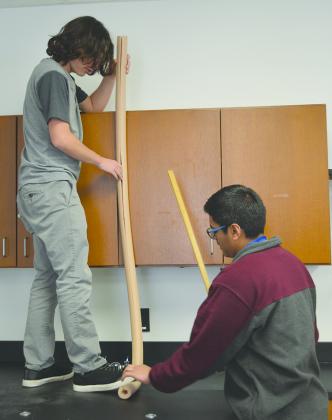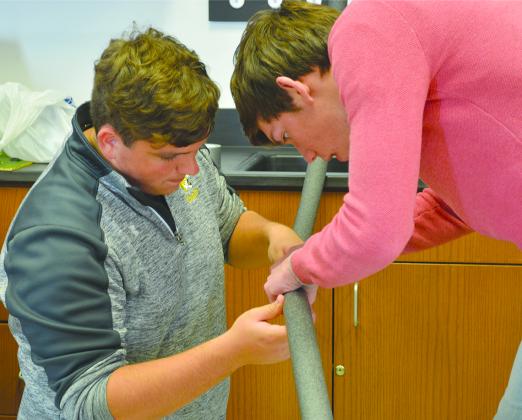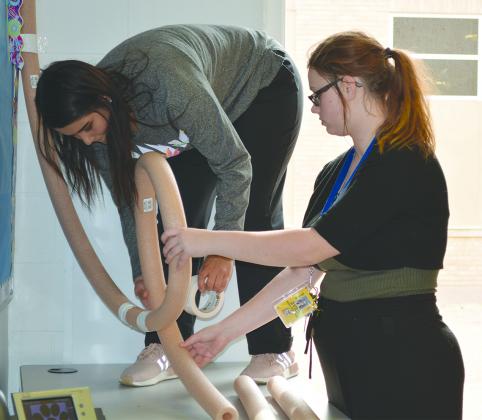Snyder High School students build roller coaster models
Snyder High School (SHS) students were in for a ride this week as roller coasters became a learning tool. The SHS honors physics class built roller coasters to represent what they’ve learned about energy this year.
Students were tasked with designing and building a roller coaster model using foam pipe insulation that would carry a marble through various obstacles along the track.
Materials available for the project included pipe insulation, PVC pipe, masking tape, duct tape, string, cardboard and one marble to act as the roller coaster car.
In the students’ track design, they were required to have one vertical loop-de-loop, two consecutive hills and one banked turn.
“The goal of the roller coaster project is for the marbles to make it through the obstacles without stopping,” junior Rutik Desai said. “We can’t use any boosters, and we can only make the marbles go by gravity. We had to meet the minimum requirement for obstacles, but for any additional obstacles, we get extra points.”
Desai’s partner, junior Spence Jones, said all of these elements have taught the class about different parts of physics.
“For physics, we’re learning momentum and speed and the way gravity affects those,” Jones said. “Gravity is a good way to show that the marble can go through the roller coaster.”
By designing and building the roller coaster, students learned about Isaac Newton’s laws of motion, velocity (speed) and acceleration.
“With this project, we’ve learned about kinetic energy and how it’s needed to move the marble through the obstacles,” senior Brianna Gaines said. “The more kinetic energy you have, the better the roller coaster will work out.”
Junior AmyAnn Villanueva said the best way to produce kinetic energy is by starting the roller coaster at a high point.
“By starting at the top of the cabinet near the ceiling, you get the most potential energy,” she said. “With this project, it’s important to plan ahead.”
Students were given one class period for research, three class periods for building and testing designs and one class period for presentations.
While running the marble on the track, students had to calculate its velocity, potential energy, kinetic energy, acceleration, force, work, power and cost of operation.




